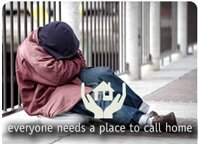Homelessness in Metro Vancouver
Almost every neighbourhood in Vancouver experiences homelessness. While many services are concentrated in the Downtown Eastside homelessness counts have identified many people sleeping in parks in the West End, along retail corridors like Mt. Pleasant, Commercial Drive, South Granville or Kitsilano’s Fourth Avenue as well as places Pacific Spirit Park or Queen Elizabeth’s garden. Vancouver is not alone in having a homelessness crisis; there are over 3,000 people who are homeless in the Lower Mainland.
What is supported housing?
Supported housing is the solution to homelessness. People are given decent housing and provided with a support worker or team of people to assist people achieve self-identified goals. People placed in housing with supports cost the tax payer $37,000 in direct costs; while homeless a person costs the tax payer $55,000.
Has their been an increase in homelessness?
Since counts began in 2002 there has been a shocking 137% increase in overall homelessness and a 373% increase in the number of people sleeping outside.
What about shelters, food-banks and soup kitchens?
A person who is homeless needs a home. Shelters are not places for people to assemble a decent quality of life. Shelters are usually mats on a floor or bunks in a ward or very small rooms in a congregate setting. They are more expensive then providing housing. If you are in a shelter you are still homeless. You cannot stay for more than 30 days in most cases and they are a band aid. People are not shelter-less, they are HOMEless.
Many people are turn away from shelters because of behaviours resulting from addiction or mental illness. Others do not want to go as they do not have the ability to be around people and prefer to stay outside even in the worst of weather conditions.
What percentage of people who are homeless have a mental illness?
It is estimated that 80% of those who are homeless suffer from a mental illness and/or addiction.



